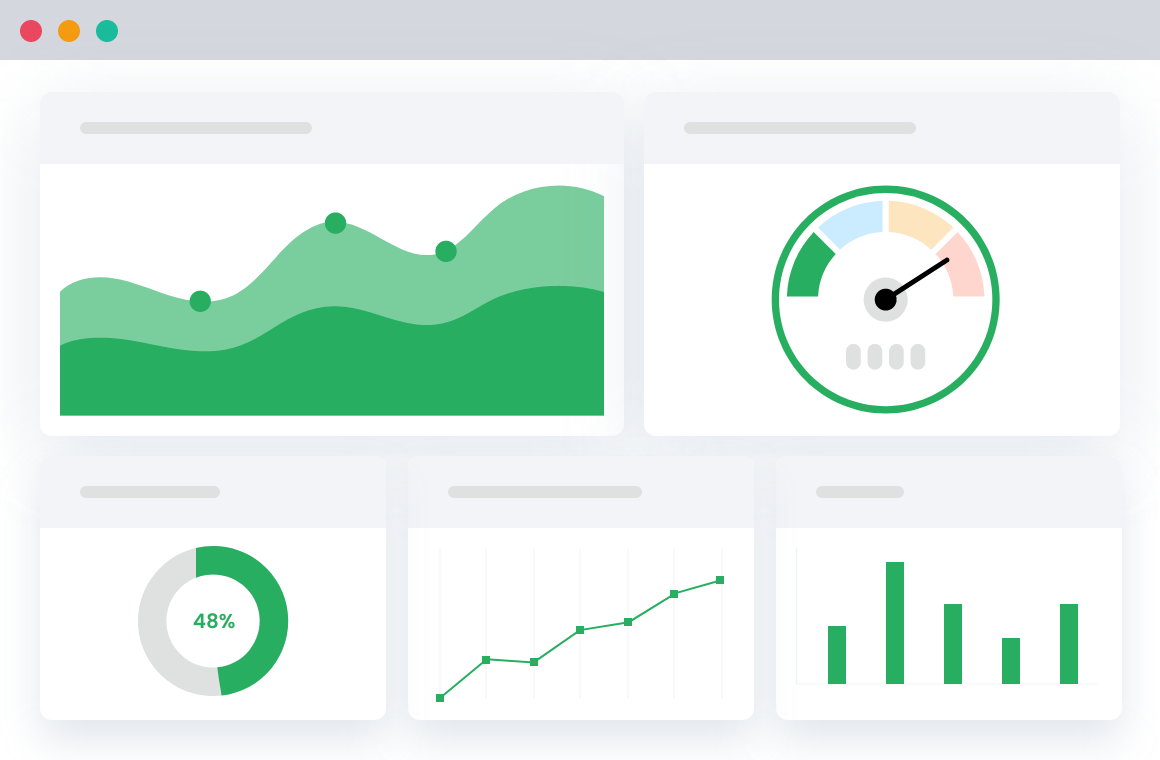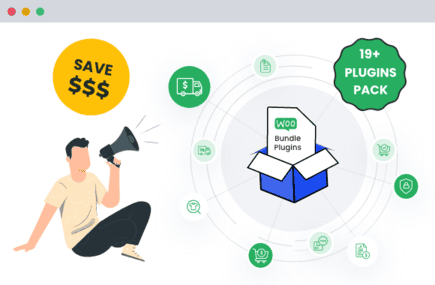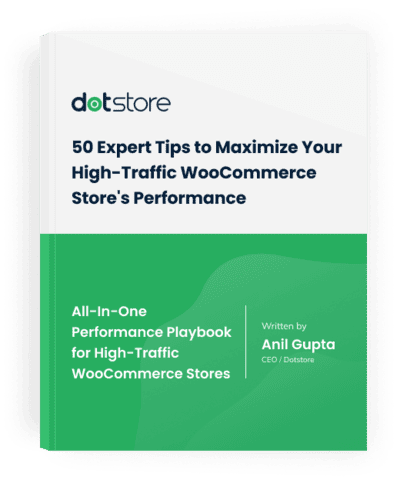Table of Contents
eCommerce trends shift constantly, sometimes even overnight. However, one principle remains the same: Customer retention is critical. While the charm of gaining new customers is undeniable, nurturing existing ones can boost the sustainable success of online businesses.
Consider this: while attracting new customers is crucial, research states that retaining existing ones has a better impact on revenue growth. A mere 5% increase in customer retention rates can skyrocket revenue by an astonishing 25-95%. These figures highlight the immense power of a loyal customer base, which is not to be missed out on.
When it comes to keeping customers versus getting new ones, the strategies involved can be very different. While attracting fresh visitors might give your shop a quick boost, building solid, long-lasting connections with existing customers yields a higher ROI. Especially in today’s cutthroat market, with customers constantly jumping from one thing to the next, focusing on keeping them around can make it easier to build a sustainable eCommerce business.
For instance, in the United States, a significant 40% of online revenue comes from returning or repeat purchasers, who represent only 8% of all website visitors. This stat underscores how crucial it is to focus on keeping customers, which is the key to eCommerce success. Hence, businesses are encouraged to adopt effective retention strategies.
In this article, we will take a look at effective retention strategies that can help your eCommerce businesses gain a competitive edge.
Understanding customer retention rates in eCommerce
How do you measure and calculate customer retention rate?
Metrics such as Customer Lifetime Value (CLV), Repeat Purchase Rate, and Churn Rate serve as invaluable indicators of customer retention, offering insights into the health of an eCommerce business’s customer relationships.
- Customer Lifetime Value (CLV): This number shows how much a customer is worth to your business during their whole time shopping with you. When you look at CLV, you can see how much money each customer brings in and use that to decide how to keep them coming back.
- Repeat Purchase Rate: This tells you how many customers buy from you more than once in a certain time. If lots of customers keep coming back, it means they like your offerings, and you’re doing a good job keeping them interested.
- Churn Rate: This shows how many customers stop buying from you in a set time. If this number is high, it means you might need to work on keeping your customers happy so they don’t leave.
The Customer Retention Rate is an important number that measures how well your strategies are keeping customers interested. It shows the percentage of customers who stick around and stay involved with your business for a given time. The formula to calculate the Customer Retention Rate is CRR = ((E-N)/S) x 100, where,
- E represents the number of customers at the end of the period.
- N represents the number of new customers acquired during the period.
- S represents the number of customers at the start of the period.
This percentage shows how many customers stayed loyal to your brand during the set time. It gives you useful insights into how well your business keeps customers coming back. A higher retention rate means your customers are more loyal, and your strategies are working better, which helps your business keep growing steadily.
What is the average customer retention rate for eCommerce?
According to Sprinklr, a leading customer experience management platform, the average customer retention percentage in eCommerce is around 38%. This figure serves as a benchmark for businesses operating in the eCommerce sector, providing a baseline for assessing their retention performance.
However, it’s important to recognize that customer retention rates can vary significantly across different eCommerce niches. For instance:
- Luxury goods eCommerce platforms often enjoy higher retention rates because their products are exclusive, and customers are deeply loyal to the brand.
- On the other hand, fast-moving consumer goods (FMCG) eCommerce sites might see lower retention rates. This is because there are so many options available, and customers tend to be less loyal to specific brands in this sector.
- For services-based eCommerce businesses, retention rates can vary based on factors like the quality of service and how satisfied customers are. They face their own set of challenges and opportunities when it comes to retaining customers.
Regardless of the niche, it’s crucial for eCommerce businesses to continually monitor and optimize their customer retention strategies. Even if your current retention rate is satisfactory, any increase in customer retention can yield substantial benefits for your profitability and overall business performance.
7 Strategies for eCommerce Customer Retention
By implementing these seven strategies, eCommerce businesses can effectively enhance customer retention, foster long-term loyalty, and drive sustained growth in the competitive digital landscape.
1. Seamless Communications
Effective communication is vital for building and maintaining strong customer relationships in eCommerce. Implementing omnichannel communication ensures that your brand remains consistent across different platforms and touchpoints in the customer journey. This consistency is paramount in fostering trust and loyalty. Utilize channels such as email, live chat, social media, and SMS to engage with customers at various stages of their shopping experience. By keeping customers informed and making them feel valued throughout their journey, you reinforce your brand identity and strengthen the bond with your audience.
Integrating advanced technologies like chatbots and AI is pivotal in streamlining communication channels and enhancing efficiency. These intelligent tools empower businesses to deliver instant responses, address queries promptly, and tailor interactions to individual preferences. This makes it possible for businesses to quickly resolve issues while fostering a positive connection with their customers.
2. Customer Service and Support
Exceptional customer service is key to retaining customers and fostering loyalty. It is a must that eCommerce businesses need to respond promptly to inquiries, concerns, and issues to provide a positive and hassle-free shopping experience to their customers. It’s imperative that a customer support team embodies empathy, professionalism, and efficiency, as these qualities ensure that every customer feels genuinely valued and receives effective support throughout their journey. Employers should prioritize these qualities when selecting or training individuals for customer support roles.
3. Discounts and Loyalty Schemes
Customized discounts coupons and loyalty initiatives can motivate customers to make repeat purchases and boost customer retention. Analyze data on customer purchase history to craft personalized offers that align with their specific preferences. Introduce a loyalty program that acknowledges and rewards customers for their ongoing support, providing them with special discounts, complimentary shipping, or VIP access to sales and events, all aimed at fostering consistent interaction.
4. Upsell and Cross-Sell Opportunities
Utilize upselling and cross-selling strategies to inspire customers to explore additional products or upgrade their selections. Incorporate recommendations for complementary items or upgrades at checkout or through personalized suggestions to elevate both the average order value and overall customer satisfaction. Extend these efforts beyond the initial sale by employing post-sale upselling and cross-selling tactics, enticing customers to return to your store for future purchases, thereby fostering repeat business and extending their retention period.
5. Social Media and Community Building
Harness the power of social media platforms to engage with customers, build brand awareness, and foster a sense of community. Share engaging content, interact with followers, and respond to comments and messages to cultivate meaningful relationships. Encourage user-generated content, such as product reviews and testimonials, to showcase social proof and build trust among potential customers.
6. Personalizing the Shopping Journey
Tailoring experiences to individual preferences and needs is essential for boosting customer loyalty. Customize marketing messages, email campaigns, and website content using insights from past purchases, browsing habits, and demographic data to ensure relevance and increase engagement. By delivering personalized shopping experiences that deeply connect with customers, businesses can cultivate lasting loyalty and retention.
7. Dynamic Remarketing
Deploy dynamic remarketing campaigns to highlight products customers have previously viewed or shown interest in. Present personalized recommendations to remind customers of their past preferences, boosting the chance of repeat purchases. Target customers who visited your site or abandoned their carts with tailored product suggestions or exclusive offers, motivating them to finalize their purchase and strengthen customer retention.
Technology’s Role: Unlocking Customer Retention with Enhanced Ecommerce Google Analytics for WooCommerce
The above-mentioned customer retention strategies rely on a thorough understanding of customer behavior and preferences, highlighting the pivotal role of data analytics. Google Analytics serves as a vital tool in this regard, providing comprehensive insights into customer interactions and enabling informed decision-making. Through meticulous tracking and analysis, eCommerce businesses can gain granular insights into customer shopping patterns and journeys, and optimize their approaches, ultimately enhancing retention efforts and fostering long-term customer loyalty.
From tracking website traffic to monitoring conversion rates and beyond, Google Analytics’ robust suite of analytics tools equips businesses with the data needed to tap into metrics such as repeat purchase rates, average order value, and customer lifetime value, so businesses can discern patterns, identify pain points, and refine their retention strategies accordingly.
Through features like Behavior Flow Analysis, businesses can visualize customer paths on their website, identifying entry points and potential bottlenecks hindering retention. Conversion Tracking provides data on customer actions contributing to retention, and aiding in optimizing marketing efforts. Audience Segmentation allows businesses to understand diverse customer groups, informing personalized retention strategies. Enhanced Ecommerce Tracking furnishes detailed insights into shopping behaviors, while Event Tracking offers additional engagement insights, and guiding strategies to enhance loyalty.
Enhanced Ecommerce Tracking
Leverage the power of analytics to boost your store’s performance and maximize profits.
14-day, no-questions-asked money-back guarantee.

The plugin streamlines your eCommerce analytics like none other. By setting up Enhanced Ecommerce Google Analytics for WooCommerce, users can automate and simplify the data analysis process. This platform offers robust features tailored specifically for eCommerce businesses, allowing users to track customer behavior with unparalleled accuracy.
- Tracking Customer Behavior: Enhanced Ecommerce Google Analytics for WooCommerce enables businesses to track a myriad of customer interactions, from product views to checkout abandonments. By visualizing these critical touchpoints, businesses can identify areas for improvement and optimize their customer retention strategies accordingly.
- Direct Impact on Retention Strategies: The insights gleaned from Enhanced Ecommerce Google Analytics for WooCommerce directly inform retention strategies. For instance, identifying products with high abandonment rates during checkout prompts businesses to optimize the checkout process to reduce friction and increase conversions. Similarly, analyzing customer lifetime value (CLV) helps businesses tailor loyalty programs and personalized offers to retain high-value customers.
- Automation and Simplification: Enhanced Ecommerce Google Analytics for WooCommerce streamlines the data analysis process, allowing businesses to focus on actionable insights rather than navigating complex datasets. With automated reporting and intuitive dashboards, users can quickly identify trends, patterns, and opportunities to enhance customer retention.
Strategically Reducing Churn with Seamless GA-4 Integration
Integration between Enhanced Ecommerce Google Analytics for WooCommerce and Google Analytics-4 (GA-4) offers a seamless and comprehensive solution for understanding and addressing customer churn. This integration ensures that businesses can harness the full power of both platforms to gain deeper insights into customer behavior and effectively mitigate churn.
Integration Process: Enhanced Ecommerce Google Analytics for WooCommerce seamlessly integrates with Google Analytics-4, allowing businesses to consolidate their eCommerce data with advanced analytics capabilities. Through this integration, businesses can track key eCommerce metrics, such as product views, purchases, and cart abandonments, alongside GA-4’s enhanced tracking features.
Incremental Benefits: The integration between Enhanced Ecommerce Google Analytics and GA-4 provides incremental benefits in understanding and combating customer churn. By analyzing eCommerce data within the broader context of GA-4, businesses can gain deeper insights into customer behavior across multiple touchpoints and channels. This comprehensive view enables businesses to identify the root causes of churn more accurately and develop targeted strategies to address pain points.
Example: Suppose an eCommerce business identifies a significant increase in cart abandonment rates through Enhanced Ecommerce Google Analytics for WooCommerce. By integrating this data with GA-4, the business discovers that a large portion of abandoned carts are from customers who encountered technical issues during the checkout process. Armed with this insight, the business develops targeted strategies to address these pain points, such as optimizing the checkout experience for mobile users and implementing real-time error notifications. As a result, the business successfully reduces cart abandonment rates and mitigates customer churn.
Detailed Tracking Features Track Each Step of Your Customer’s Journey
It’s really important to keep a close eye on how customers move through every step of their customer journey, from when they first check out your website to when they make a purchase. By carefully tracking these interactions, businesses can learn a lot about what’s working well and what needs improvement in their website and marketing efforts. Tracking tools help spot where customers stop or leave the journey and where they spend more time, showing what interests them most. With Enhanced Ecommerce Google Analytics for WooCommerce, businesses can see details like how long people spend on the site, how many pages they visit, and the path they take, giving a complete picture of how customers move around and interact with the website.
Gaining In-Depth Customer Insights with Custom Metrics
Custom metrics are like personalized tools that help businesses understand how customers behave, making it easier to make smart decisions. Unlike regular analytics, custom metrics go deeper, focusing on what matters most to the business. For example, they can show how often customers come back to buy again, how much time passes between purchases, or how much each customer is worth over time. With Enhanced Ecommerce Google Analytics for WooCommerce, businesses can make their own custom metrics to track exactly what they need for their online store, giving them a clearer picture of how customers behave and how well their retention efforts are working.
Utilizing Dynamic Remarketing for Repeat Purchases
With Enhanced Ecommerce Google Analytics for WooCommerce, businesses can make ads that change based on what users have looked at before. This helps bring customers back to buy again. Dynamic remarketing is a strong way to get people to buy again and make the most of each customer’s value in online stores.
By meticulously tracking metrics such as average order value and customer acquisition costs, businesses can strategically deploy initiatives like offering free shipping to build customer loyalty while maintaining cost-effectiveness. This data-driven approach empowers businesses to optimize their resources and enhance customer retention without overspending.
Implement Your eCommerce Customer Retention Strategy Today
The strategies and tools we’ve talked about above provide a complete solution to common issues in keeping customers. From making communication easy, to giving personalized discounts and using dynamic remarketing, each idea aims to make the customer experience better and keep them coming back. At the heart of these strategies is Enhanced Ecommerce Google Analytics for WooCommerce, which gives detailed tracking and insights that are super important for keeping customers around.
By using this powerful tool, businesses can find where they can do better, improve how they keep customers, and in the end, make their business grow. Don’t lose out on valuable customers. Start using Enhanced Ecommerce Google Analytics for WooCommerce today and make the most of your online store.
Enhanced Ecommerce Tracking
Leverage the power of analytics to boost your store’s performance and maximize profits.
14-day, no-questions-asked money-back guarantee.


